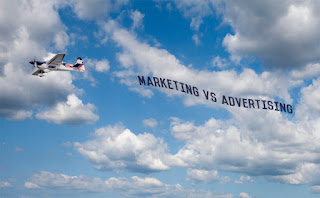The Basic of Guerrilla Marketing Principles
Guerrilla Marketing Principles - The origin of "guerrilla marketing" and its fundamental principle could be explained according to some existing literature. Generally, the "guerrilla marketing" is an example of the transfer of military-related and warfare-related vocabulary to the marketing domain. A favorite book explicitly stimulating these positive developments- and the introduction of the words "guerrilla marketing"- was "Marketing Warfare" (Ries and Trout, 1986), in which the authors state that commerce tasks are a battle to suppress the customer's mind.
By interpreting different war situations and quoting the famous military strategist Von Clausewitz (1873) commerce as a battleground is built. In this, the key elements are understood by resemblance to an environment of military conflict. In particular the Burger War (McDonalds vs. Burger King) and the Cola War (Coca Cola vs. Pepsi) are used as examples of battles with words and paintings from the artillery.
According to that background, the term "guerrilla marketing" was used by the American Jay Conrad Levinson in the 1980s (Levinson, 1984). Generally, guerrilla marketing adapts the "hit & run” guerrilla warfare tricks "invented" by Mao-Tse Tung (Elliott, 2003 ): Hit if you can win but roll if you can't. Guerrilla marketing policies shun commerce tasks, thus consuming marketing funds, when there were high-level contender for customer tending. In comparison, guerrilla marketing tasks tends to be eye-catching and surprising when applied- thus, being highly efficient to its implementation of gaining customer tending. Guerrilla marketing is expected to come up with offbeat and fantastic tasks(Eicher, 2001) and can be more effective, and thus less expensive, when compared against conventional commerce campaigns.
One famed illustration which illustrates the Ries and Trout( 1986) foreword of marketing war is the rise of the Austrian carbonated drink label Red Bull. While Ries and Trout( 1986) describe the Coke war with Pepsi and Coca Cola fighting a war for grocery leader, the Red Bull gues, sited at the Fuschl lake near Salzburg, innovated a new list of carbonated drink- the exertion drink- around which a stretching grocery segment developed. Red Bull now dominates this segment globally.
By abusing guerrilla marketing, Red Bull established the label through sponsoring relevant sports events. However, as a small start-up they could not yield to sponsor the big-hearted central brook happenings. Red Bull would like first of all sponsoring( as the CEO and the founding fathers of Red Bull Mateschitz articulated it" up to the border of idiocy ") happenings of niche plays such as, for example, Squad driving and Base Jumping. As there was little media awareness of these events, Red Bull started to produce their own cinema material and furnish it to media directs. The broadcasters accepted the free material- and Red Bull got what it otherwise has not been able to have afforded- media presence in prime time. The contest organizers being aware of the promotional assistance let Red Bull be their central sponsor for a comparatively small summing-up of fund. This became Red Bull sponsor of a rapidly increasing number of happenings. These daytimes Red Bull travels even further and composes boast happenings itself, such as, for example, aura hastens, extreme windsurfing and so-forth.
Having sketched this illustration in detail, further examples can be identified to illuminate the categories in which guerrilla marketing is present: Automotive manufacture (BMW Mini grocery foreword expedition), Cigarettes, Cultural Events/ Services (Operas, Theatres ...). Further characteristic examples of guerrilla marketing are the Greenpeace Campaigns which aim to create a maximum extent of public attention with a minimum of fiscal expenditure, e.g. the attempt to enter the Heiligendamm G8 conference area with a hot air balloon (Greenpeace, 2007 ).
By interpreting different war situations and quoting the famous military strategist Von Clausewitz (1873) commerce as a battleground is built. In this, the key elements are understood by resemblance to an environment of military conflict. In particular the Burger War (McDonalds vs. Burger King) and the Cola War (Coca Cola vs. Pepsi) are used as examples of battles with words and paintings from the artillery.
According to that background, the term "guerrilla marketing" was used by the American Jay Conrad Levinson in the 1980s (Levinson, 1984). Generally, guerrilla marketing adapts the "hit & run” guerrilla warfare tricks "invented" by Mao-Tse Tung (Elliott, 2003 ): Hit if you can win but roll if you can't. Guerrilla marketing policies shun commerce tasks, thus consuming marketing funds, when there were high-level contender for customer tending. In comparison, guerrilla marketing tasks tends to be eye-catching and surprising when applied- thus, being highly efficient to its implementation of gaining customer tending. Guerrilla marketing is expected to come up with offbeat and fantastic tasks(Eicher, 2001) and can be more effective, and thus less expensive, when compared against conventional commerce campaigns.
One famed illustration which illustrates the Ries and Trout( 1986) foreword of marketing war is the rise of the Austrian carbonated drink label Red Bull. While Ries and Trout( 1986) describe the Coke war with Pepsi and Coca Cola fighting a war for grocery leader, the Red Bull gues, sited at the Fuschl lake near Salzburg, innovated a new list of carbonated drink- the exertion drink- around which a stretching grocery segment developed. Red Bull now dominates this segment globally.
By abusing guerrilla marketing, Red Bull established the label through sponsoring relevant sports events. However, as a small start-up they could not yield to sponsor the big-hearted central brook happenings. Red Bull would like first of all sponsoring( as the CEO and the founding fathers of Red Bull Mateschitz articulated it" up to the border of idiocy ") happenings of niche plays such as, for example, Squad driving and Base Jumping. As there was little media awareness of these events, Red Bull started to produce their own cinema material and furnish it to media directs. The broadcasters accepted the free material- and Red Bull got what it otherwise has not been able to have afforded- media presence in prime time. The contest organizers being aware of the promotional assistance let Red Bull be their central sponsor for a comparatively small summing-up of fund. This became Red Bull sponsor of a rapidly increasing number of happenings. These daytimes Red Bull travels even further and composes boast happenings itself, such as, for example, aura hastens, extreme windsurfing and so-forth.
Having sketched this illustration in detail, further examples can be identified to illuminate the categories in which guerrilla marketing is present: Automotive manufacture (BMW Mini grocery foreword expedition), Cigarettes, Cultural Events/ Services (Operas, Theatres ...). Further characteristic examples of guerrilla marketing are the Greenpeace Campaigns which aim to create a maximum extent of public attention with a minimum of fiscal expenditure, e.g. the attempt to enter the Heiligendamm G8 conference area with a hot air balloon (Greenpeace, 2007 ).
The Basic Principles of Guerrilla Marketing
Pursuing the resemblance with Mao-Tse Tung's guerrilla warfare tricks seven governs can be identified which summarize the relevant principles on which guerrilla marketing relies (Levinson, 1994; Elliott, 2003). In this case, there are seven basic principles of guerrilla marketing:
Pursuing the resemblance with Mao-Tse Tung's guerrilla warfare tricks seven governs can be identified which summarize the relevant principles on which guerrilla marketing relies (Levinson, 1994; Elliott, 2003). In this case, there are seven basic principles of guerrilla marketing:
- Concentrate your resources( occasion, lieu, and topic) to attain temporary superiority.
- Sell the doctrine along with the product , not the product alone.
- Identify established blueprints, analyze them and overcome such patterns.
- Search for synergies.
- Try to outsmart any sensing filters established in your target group.
- Do not croak the direct direction; try to find the detour offering alternatives.
- Be flexible and agile instead of structure strongholds.
Looking at these rules, one can find several aspects that are not far from the "standard" commerce policies. Some aspects, nonetheless, have completely different approaches, for instance- go for temporary superiority, i.e. not dominating "the consumers " tending all the time but through a particular commerce work, and too working on doctrine located communication, i.e. not trying to sell only the product directly.
A excellent illustration to illuminate this is the Greenpeace Brent Spar campaign. Brent Spar was an offshore petroleum storage and tanker loading equipment operated by Shell. Shell projected (with buoy of the British government) to dispose of this obsolete equipment in penetrating Atlantic seas. Against this, Greenpeace raced a worldwide expedition including boycott of Shell filling stations. They even coordinated an tenancy of Brent Spar for more than three weeks (Greenpeace, 1995). Fronting stretching public and political resist, Shell abandoned the plans. Eventually, it was found that Greenpeace had substantially over-estimated the quantity of hazardous chemicals and petroleum remaining in Brent Spar. Shell's offshore disposal plan was actually much more reasonable than it seemed. This highlights that selling doctrine (environmental protection) had outshone selling a product (disposal plan).
Another good example is a campaign of the German fellowship Henkel, who has the discoloration remover SIL in its assortment of concoctions. During the football World cup finals in Germany 2006, Henkel supported the Brazilian football team in an attention-grabbing direction -female Brazilian Samba dancers wearing Bra-Sil outfits and advertisements moved through Berlin and Munich the day the football team played their plays. Henkel said that the team that proceeded people's attention to Germany's most popular stain remover should be pleased to get special promotion in return (Henkel, 2006).
Guerrilla marketing is- amongst other things- based on marketing the implicit attributes of products or services rather than their precise, functional aspects. Rather than introducing the product itself, by introducing the idea that comes with it, it addresses the feelings doctrine bound up with the product. This is done with the superiority of tending obtained at least in the terribly moment of communicating. Thus, guerrilla marketing tries to target the feelings aspects of a buying decision by differentiating a product on an ideological elevation rather than a functional elevation.
A excellent illustration to illuminate this is the Greenpeace Brent Spar campaign. Brent Spar was an offshore petroleum storage and tanker loading equipment operated by Shell. Shell projected (with buoy of the British government) to dispose of this obsolete equipment in penetrating Atlantic seas. Against this, Greenpeace raced a worldwide expedition including boycott of Shell filling stations. They even coordinated an tenancy of Brent Spar for more than three weeks (Greenpeace, 1995). Fronting stretching public and political resist, Shell abandoned the plans. Eventually, it was found that Greenpeace had substantially over-estimated the quantity of hazardous chemicals and petroleum remaining in Brent Spar. Shell's offshore disposal plan was actually much more reasonable than it seemed. This highlights that selling doctrine (environmental protection) had outshone selling a product (disposal plan).
Another good example is a campaign of the German fellowship Henkel, who has the discoloration remover SIL in its assortment of concoctions. During the football World cup finals in Germany 2006, Henkel supported the Brazilian football team in an attention-grabbing direction -female Brazilian Samba dancers wearing Bra-Sil outfits and advertisements moved through Berlin and Munich the day the football team played their plays. Henkel said that the team that proceeded people's attention to Germany's most popular stain remover should be pleased to get special promotion in return (Henkel, 2006).
Guerrilla marketing is- amongst other things- based on marketing the implicit attributes of products or services rather than their precise, functional aspects. Rather than introducing the product itself, by introducing the idea that comes with it, it addresses the feelings doctrine bound up with the product. This is done with the superiority of tending obtained at least in the terribly moment of communicating. Thus, guerrilla marketing tries to target the feelings aspects of a buying decision by differentiating a product on an ideological elevation rather than a functional elevation.


